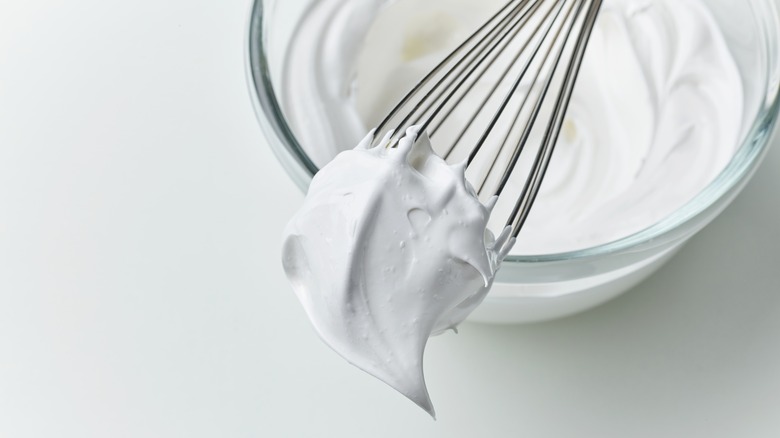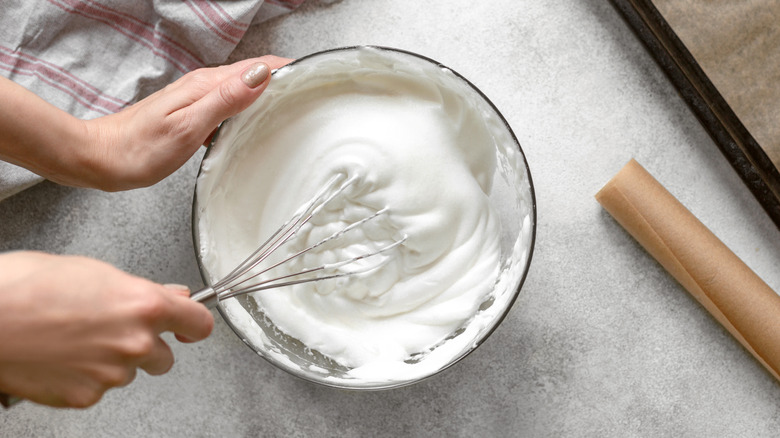What Is A Cold Whisk In Recipe Instructions?
While cooking may be an art, baking is a science, and the better you are able to control the variables in your kitchen, the more likely you are to end up with perfect results, from fantastically fluffy bread rolls to beautiful crispy pie crusts. This means that you don't only need to pay close attention to the measurements of your baking ingredients, but also to factors like temperature.
You've probably been told to use cold butter or room temperature egg whites in various baking recipes, but did you know that you should also temperature-match your baking equipment? Making your cooking tools cold or warm to correspond with the ingredients they'll be touching can give you a better final result. In particular, if you're making whipped cream, you not only want your cream to be as cold as possible, but for your bowl and whisk to be pre-chilled as well. This is why you might see recipes calling for the use of a "cold whisk." It's not any kind of complicated whisking technique; it's just asking that your whisk be chilled.
To chill your tools, just pop your bowl and your mixing tool into the fridge for fifteen to thirty minutes before using them to whip cream. This will help keep the fat in the cream stable, allowing it to trap the air bubbles and whip up properly to the desired light and airy texture.
Other tips for chilling equipment
There are even more tips to successfully use a cold whisk. If you plan on whipping your cream by hand, wrap the handle of your whisk in a towel before chilling so that you don't end up freezing your hand off in the process. If you're using a hand mixer or stand mixer, your attachments can be chilled just by moving them to the fridge. As for your bowl, a metal bowl is preferable for whipping cream, but a glass one also works. Plastic bowls don't absorb the cold as well when chilled, so as well they aren't as effective for whipping cream.
While using a cold whisk is ideal for mixing whipped cream and other dairy products, you should follow the opposite procedure when working with egg whites. When whipping a meringue, for example, your whisk and bowl should be room temperature, as should your egg whites. While whipping egg whites produces a similarly fluffy concoction as whipped cream, a meringue is created by activating proteins instead of fats. Proteins respond differently to temperature compared to fat, requiring more warmth than chill. Both whipped cream and meringue, however, can be made more stable by adding a small amount of cream of tartar to simplify the process.


